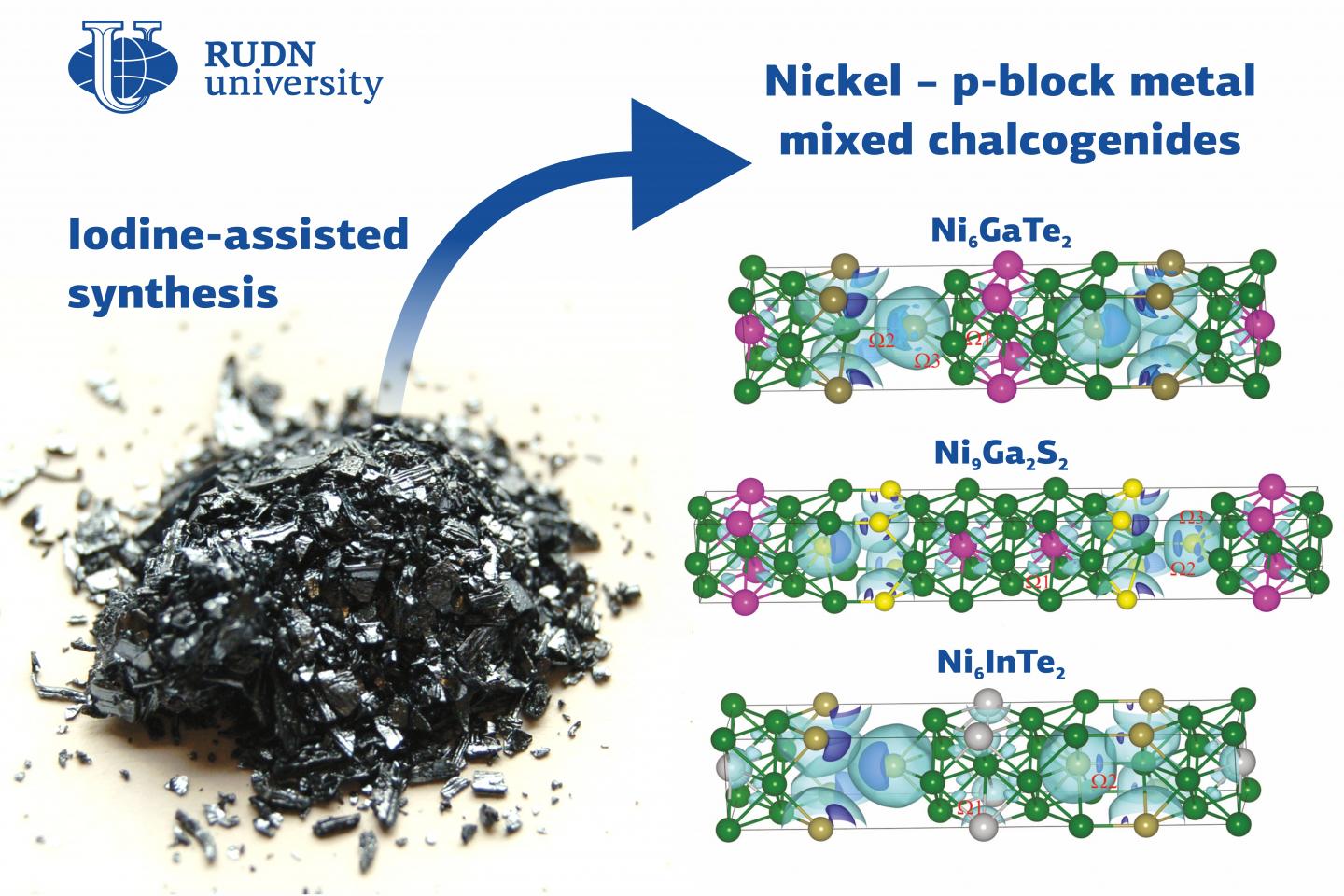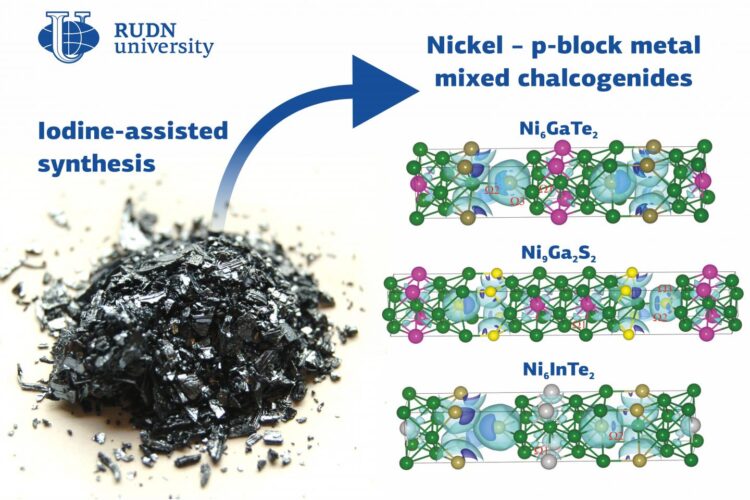
Credit: RUDN University
A chemist from RUDN University, working with a group of colleagues, synthesized three new chalcogenides (compounds that contain metals and elements from group 16 of the periodic table). The team suggested an unusual approach to synthesis that was based on iodine. An article about the work was published in the Dalton Transactions journal.
Chalcogens are elements of group 16 of the periodic table that include oxygen, sulfur, selenium, tellurium, polonium, and livermorium–an artificial radioactive element. Chalcogenides are compounds of chalcogens with metals that are used as photosensitive materials. Today, scientists are looking for ways to obtain new stable chalcogenide structures. A group of chemists including a scientist from RUDN University was the first to use iodine in the synthesis of new stable crystalline chalcogenides and to confirm its efficiency.
“Ordered metal compounds and their derivatives are a broad and exciting field of research. They are being studied both theoretically (because of complex crystalline structures and unusual binding schemes) and practically, due to their useful physical properties. We have obtained three new chalcogenides using iodine-based high-temperature synthesis”, said Viktor Khrustalev, a Doctor of Chemistry and the Head of the Inorganic Chemistry Department, RUDN University.
Of the three new chalcogenides obtained by the team, two were based on tellurium (Ni5.80GaTe2 and Ni5.78InTe2) and one on sulfur (Ni9.39Ga2S2). These are rare structures in which nickel fragments alternate with nickel-sulfur or nickel-tellurium ones. Besides iodine, the scientists used nickel, gallium, indium, elemental sulfur, and tellurium for synthesis. Crystalline iodine and nickel powder were purified and then mixed. After that, the mix was put in a silicon dioxide capsule and subject to 600? heat for several days until it was completely dried.
As a result, monocrystals of the first two compounds and small crystal flakes of the third one were obtained. To study the new compounds, the scientists used X-ray structural analysis. It turned out that the new chalcogenides formed rhombic system crystals, unlike other similar compounds that usually form their chrystals in the tetragonal system. In the former case, an elementary cell of a crystal system is a parallelepiped with different side lengths, while in the latter it is a cube stretched along the tetrad axis. The rhombic crystal system in the new compounds is stable, and in Ni5.80GaTe2 it is preserved even under pressure or at high temperature.
“It is essential to mention the key role of iodine in the synthesis of the new chalcogenides. Because of iodine, we managed to obtain new synthesis products, only one of which would be available with traditional methods. Apparently, the reactions that cause the formation of new triple bonds require the presence of iodine,” added Viktor Khrustalev from RUDN University.
###
Media Contact
Valeriya Antonova
[email protected]
Related Journal Article
http://dx.





